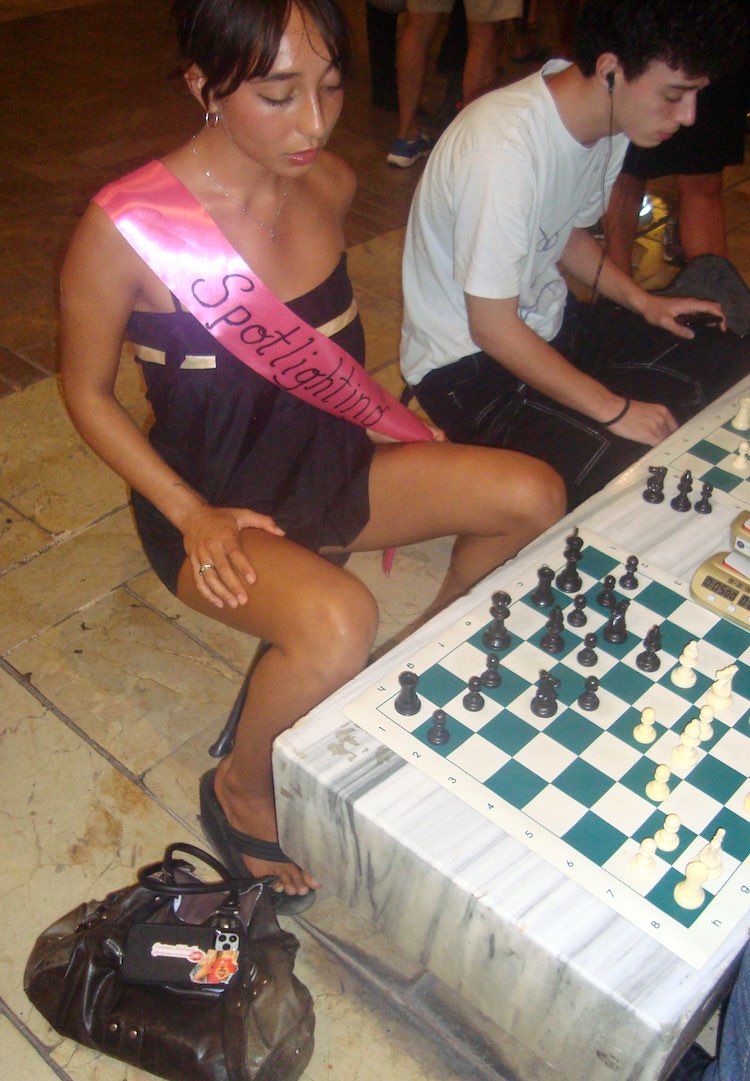Why I can’t get around blocking culture when it comes to dating
Photography by Jeremy Orr
Words by Genevieve Phelan
Deleting their number doesn’t actually help you move on.
In the weeks following a breakup, whether it’s big or small, rationality is rarely found. We’ll do anything to puncture the silence on the bad days of missing someone, whether it’s a kneejerk phone call or a one-word text.
We might block their number for a week and feel great about it, then unblock it for a day and wonder what messages they could have sent out into the abyss in that dead time. ‘But what if they said something?’ you ponder. Your brain thrives on hyperbole in this phase.
You exaggerate little things or a five-minute life check-in phone call and relapse on false hope again, and then you berate yourself for doing so. Worse yet, you fear the wrath from family and friends and the judgement they will rightly pass.
I’ve recently really struggled with ‘cancel culture’ or ‘blocking culture’ and the notion of cutting someone off indefinitely when you are not yet ready to emotionally move on. Grieving anything in life comes with its nuances and personal idiosyncrasies. Every time we move on from anyone, it comes with its own unique set of steps to the elusive Promised Land of Closure.
In a broader pop-cultural context, cancel culture is explained by Meredith Clark, a professor at the University of Virginia’s department of media studies, for The New York Times as “an expression of agency… to a certain extent: I really do think of it like a breakup and a taking back of one’s power.”
She explains that cancelling someone is “… an act of withdrawing from someone whose expression – whether political, artistic or otherwise – was once welcome or at least tolerated, but no longer is.” But for the sake of this yarn, we’re talking about cancel culture or blocking culture or moving on culture in the context of romantic breakups specifically.
Should you fake it till you make it?
Australian author Zoë Foster Blake endorses a no-contact approach after a romantic severance for 50 days in her book (and app) Breakup Boss. It is brutal and brilliant. I’m sure many have abided by it and lauded its value, but I think I am allergic to the 50-day rule. The theory behind the no-contact approach is simple: when you’re still conversing and texting and remembering items of clothing left in the back seat of their car, moving on is impossible.
Until your higher self and your actual self intersect, you’re going to be faking your moved-on-ness. Sometimes, for some people, this notion of walking through the motions until you’re really living them works. Time and distance and distraction work.
For others that flail and falter with the idea of letting go, the hopes and possibilities in your mind will remain all-consuming post-breakup. My mum told me recently that “it’s impossible to see it when you’re in it”, and she’s right – she could see straight through my feigned moved-on-ness.
This is where you’re at your most fragile, unpredictable and vulnerable. You are volatile and inconsistent in your processing of feelings. You might be necking vividly coloured cocktails and gorging yourself on fancy flatbread with your friends one day, and the next you’re refusing to go out because you feel strange, sad and sleepy, in autopilot like a stunt-double version of yourself.
Your internal thoughts are flitting between ‘move on like everyone says’, and ‘hold tight’ because your heart is pining for them. It’s not even a conscious emotional choice – you just feel weighed down by these nagging thoughts and can’t rally behind your friends’ resounding you-can-do-betters.
Here ensues the forceful, oftentimes toxic, positivity in ‘bettering yourself’ after a breakup. It’s cancel and curate culture. It’s cutting your hair, flogging yourself at the gym and getting back on the swipes. It’s exchanging uplifting quotes between friends and convincing yourself you feel a certain way when you don’t.
I am not undermining any of these things. I’ve done them all multiple times in my life after all sorts of splits, not just the romantic kind. Sometimes they are truly uplifting and mind-altering. I just think that our ctrl + alt + delete culture and the ferocity in which we demand people cut out what’s wrong for them is far too idealistic and, ultimately, unattainable.
The only way someone can move on is if they unequivocally and introspectively realise that it’s time to. This is a deeply personal and internal moment of realisation that can feel as swift as a switch flicking. Ironically, I’ve said before that feelings can’t just be switched off.
I don’t think they can consciously be switched off, but I have a new appreciation for working towards their dulling and dimming in a way that doesn’t necessitate physical makeovers, disconnection or number blocking, but a more profound sense of realisation that occurs internally.
Why a bridge person isn’t usually the answer
I read an article the other day in the New Yorker Magazine about someone getting ‘the bridge dog’. The bridge dog is a new dog purchased in order to help someone grieve the loss of their other recently deceased dog. “I thought I could stave off the grief of losing one dog by getting another,” it reads.
This is a shit analogy but it made me think about the concept of a Bridge Boy or Bridge Person. In our desperation to embrace blocking culture, we often hurl ourselves into the apps again far too prematurely. When we meet someone immediately post-breakup, it can feel comforting at first.
When we’re experiencing the exhilaration of something new, our preoccupation with the past-lover wanes. But more often than not, after three or four dates and a noticeable lack of chemistry, that new someone starts to pale in comparison.
You pit them against your past-person ruthlessly, contrasting their physical, emotional and chemical makeup. This isn’t because the new person is wrong, it’s because your mind will most likely reject anyone new in that state.
It’s like trying to perform a kidney transplant on someone with the wrong blood type. There’s something in your biochemical composition in that comedown phase that won’t really accept anybody new. They could be doing everything Shania Twain lists in That Don’t Impress Me Much and it still won’t impress you much.
They may act as a decent distraction and illuminate the behavioural faults of the old person, but that intangible magnetism from the lingering lover is still stuck on your psyche like a bad club entry stamp you try to scrub off in the shower the morning after. All bad club stamps do fade though. Some just take a few more showers, days and exfoliation attempts to budge.
Sometimes you’ve got to do the ‘wrong thing’ to truly process your feelings
One night recently I craved the hedonistic escape of seeing my past person again. Just once more. It would be purely physical – an inhalation of their hair fragrance and sweat, and the feeling of combing my fingers through their distinctly soft locks.
It would be swift and unflinching in its routineness, and I would get my fix. I planned a hypothetical scenario in which I kept my purely physical reunion with this past-person private from the people in my life with the most vested interest in my moving on, so I could enter into my shame spiral in solitude.
I thought I could go back on multiple occasions in random and unpredictable intervals over the next few months, and nobody would know. So not only was I spectacularly failing at Zoë Foster Blake’s 50-day rule (sorry ZFB), but I was consciously lying to the people I would usually never dare to keep secrets from. I went to this person’s house only a few weeks ago and what occurred is why I am writing this down now.
Despite the sheer tyranny of my actions that evening, it was only in seeing this person – after the dust had settled and the tears had dried – that I realised that moment between those four bedroom walls was all that it actually ever was.
Maybe previously our encounters had been bookended by dinners and drinks and movies and drives, but when stripped bare, it was just physical, animalistic interactions. I didn’t feel guilty or bad about myself. What I felt was genuine liberation.
The clarity that ‘going back’ allowed that night was a force strong enough to lift me up, dress me, order me an Uber and get out of there for good. That was the first time I had been the one to do the walking, the leaving and the saying no. And maybe in a completely twisted, probably-inappropriate-to-be-endorsing way, that was the thing I had to do to move forward with my life.
I understand my situation is far less devastating, complicated or crippling than that of serious long term relationships and people that have endured abuse and manipulation at the hands of the person who is supposed to love them the most. But there is something to be said about understanding that nobody can walk in someone else’s shoes, even if they have a very similar pair or have walked the same path before.
Every ending and the way you process that ending is relative. When you are ready to move on, you will. You might make some blundering mistakes and it may take an exhausting number of attempts, but you are never going to truly block, remove or delete someone from your mind. Instead, you must come to terms with who that person is and see the situation clearly for what it is.
There is no shortcut or one-size-fits-all way or number of days to cut communication channels that will revive a crippled heart. It’s about finding out what romantic rehabilitation looks like for you. Maybe for a while, that’s going back to them and enduring more suffering until you see things for what they truly are.
Maybe it’s finding someone new. Maybe it is a long bout of radio silence and alone time. Or maybe it’s throwing an ‘I’m single, bitches’ party. The moral of this story is, when it comes to breaking something off, cancellation is not always closure. Sometimes the resolution is messy, slightly immoral and dysfunctional. And if that’s what it takes for you to let that loser go, so be it.













